A Seedling Career Blooms: Botany Student Studies Woolsey Fire’s Aftermath
Three days a week, CSUN graduating senior Richard Rachman, an ecology and evolution major, treks through the Southern California hillsides alongside an intern or two, following uneven trails lined with plants that tower over him. Every few feet, Rachman points out a new plant and rattles off the Latin name and the plant’s historic uses, off the top of his head.
If he doesn’t recognize a plant, he’ll pull out his phone and use an app developed by botanists, take a picture or bring a sample back to his lab. Rachman studies invasive plants — a problem that has multiplied in the region since the Woolsey Fire last November.
These non-native plants have made it to California as seeds with the help of unwitting settlers, farmers, ranchers, tourists — and, sometimes, animals, Rachman said. Many of these invasive plants (including weeds) prefer disturbed soils, such as what happens after a wildfire — these plants are known as ruderals.
Many native plants are fire-adapted, and their seeds can be germinated by smoke. When the invasive plants
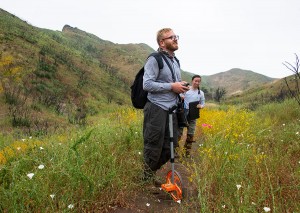
Richard Rachman, with intern Sarah Tian, standing in a field of western morning glory (Scientific name: Calystegia macrostegia). Photo by Lee Choo
grow, they take up natural resources, often displacing and killing the native plants. Rachman works for the National Park Service, locating these invasive plants one at a time (sometimes walking back and forth on a section of a trail several times), so they can be safely removed.
“People want to see flowers and bugs and wildlife,” Rachman said, “but a lot of science is data and numbers and repetition. But I love it. I love the repetition.”
The difference between a good weed and a bad weed, Rachman explained, is whether the weed is native to the location where it sprouts up. “This is a bad weed,” Rachman said, taking a bite out of the edible but invasive mustard flower.
“I’ve only worked with him a few times at this point, but I’ve already learned tons of plants from him,” said Sarah Tian, a summer intern from UCLA.
Rachman’s interest in botany began in 2017, when Paula M. Schiffman, a biology professor at CSUN, invited him to participate in a dendrochronology project — the study of tree rings — to study why certain trees and shrubs seemed to be dying at high rates. His passion for the field was apparent, Schiffman said, when he took her Evolutionary Biology course in fall 2016. Rachman and Schiffman applied for and received the Department of Biology’s Outstanding Student-Faculty Collaboration Award, which funded Rachman’s travel and study in Wyoming for the project.
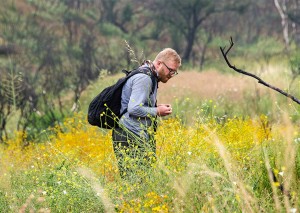
Rachman walking off the trail through a field of flowers. Photo by Lee Choo
Next, Rachman spent a semester abroad in Ecuador, studying the bait preferred by the local rodent population, as well as the biodiversity in the Amazon and Andean Cloud Forest. When he returned to the U.S., Rachman arranged to work for the federal government in Nevada. He spent three months living in a trailer in the Great Basin desert, analyzing shrubs, forbs (an herbaceous flowering plant) and grasses in the habitat of the Greater Sage Grouse, a vulnerable bird studied by government scientists in that region.
“I’m glad I did [that internship], because it changed my life,” Rachman said, noting that was the time when he really fell in love with botany.
Rachman next landed an internship with the National Park Service to identify the locations of the 25 most controllable invasive plants in California, which then turned into a paid job he’s continued as he completes his last undergraduate coursework and prepares to start graduate work in botany at CSUN.
“I love it. This is like a dream,” he said. “I definitely want to get my master’s degree and maybe someday my Ph.D. so I could be leading these sorts of projects, but I love hiking. I love being in the field.” He plans to continue his work with his mentor, Schiffman, who will assist Rachman with his thesis process.
“I know a lot, but I also don’t know a lot,” Rachman says. “I’d be a really bad botanist if I thought I knew everything.”
Learn more about the 25 (most controllable) invasive plant species: https://www.nps.gov/samo/learn/management/invasive-plants.htm

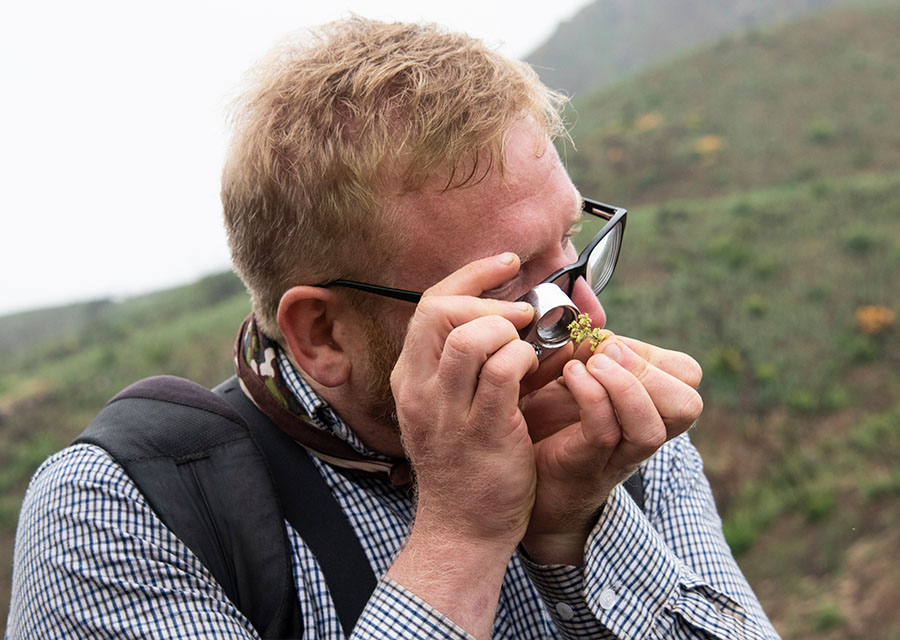
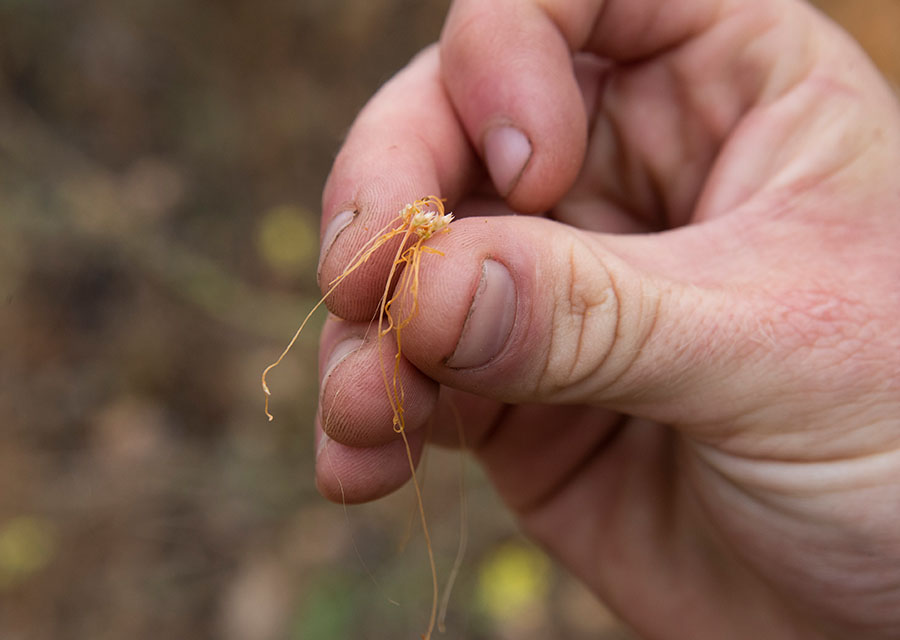
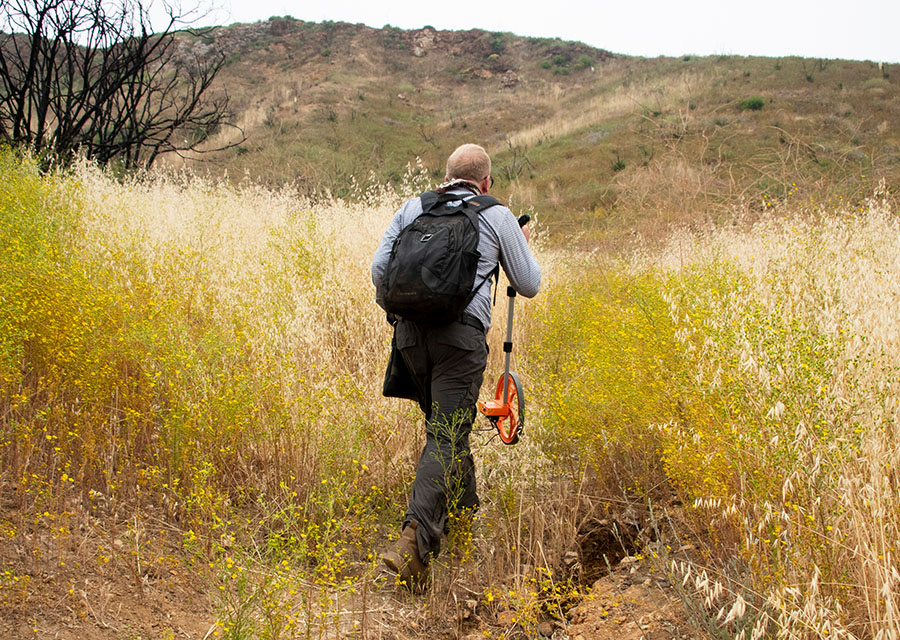
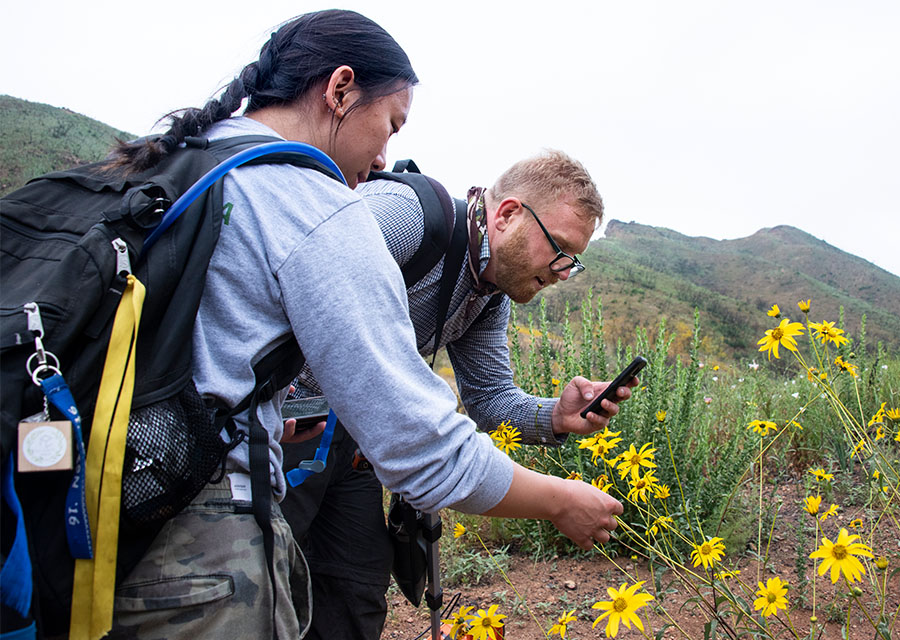
 experience
experience